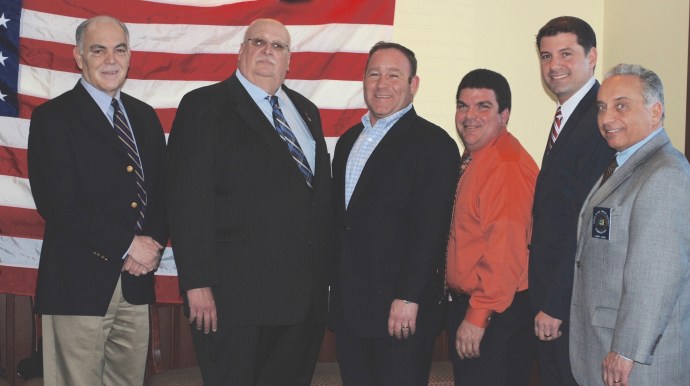The Garden City Park Water District has created a pilot program aimed at removing low levels of 1,4 Dioxane from drinking water through a process using chemical reaction and UV light.
“Obviously, 1,4 Dioxane has been a topic of conversation and a hot-button issue lately,” Garden City Park Water District Superintendent Michael Levy said. “The water district has taken it upon itself to get out in front of it and figure out how to treat it.”
Right now, 1,4 Dioxane is an unregulated contaminant. There is a recommended safe drinking water standard of 50 parts per billion, Levy said.
Across Nassau and Suffolk counties about 70 percent of wells have some detection of 1,4 Dioxane, but the majority of wells are below 1 part per billion, Levy said.
In the Garden City Park Water District, all wells except one have less than 1 part per billion 1,4 Dioxane detected.
The well with the highest detected level, the Manhasset Hills well, has 3 parts per billion, and is the site of the pilot study.
“Our hope is to make it non-detectable to the best that technology can look for it today” Levy said.
The pilot is of a process called advanced oxidation, which Levy said is the only treatment proven to remove 1,4 Dioxane at this time.
The process uses either chlorine or hydrogen peroxide combined with a UV reactor to remove the 1,4 Dioxane from the water.
Depending on the levels of 1,4 Dioxane in a well, would depend on the size of the treatment system needed, Levy said.
“In Garden City park we have very, very low levels of 1,4 Dioxane so we’re piloting a process … that is on the smaller side,” Levy said.
Currently, the district is waiting for approval from the Nassau County Health Department to run the pilot, Levy said.
Levy added that the water run in the pilot will be run to waste, and not sent to consumers.
Levy spoke about the pilot process to Long Island water commissioners during a Nassau Suffolk Water Commissioners’ Association meeting in June.
Westbury Water District Commissioner Vincent Abbatiello, president of the association, said in a news a release that “issues surrounding 1,4 Dioxane are of great concern to the public in all our 21 member districts and beyond.”
“Superintendent Levy’s fact-filled presentation shed light on potential avenues of action while we await information on development of a regulatory standard for 1,4 Dioxane,” Abbatiello said.
Other suppliers on Long Island are piloting similar systems, Levy said, including Plainview, Bethpage and Hicksville.
The Environmental Protection Agency classifies 1,4 Dioxane as “likely to be carcinogenic to humans” by all routes of exposure.
Levy noted that the allowable levels of 1,4 Dioxane in food and other products are much higher than the 50 parts per billion allowed in drinking water.
The set safe level by the Environmental Protection Agency for food, “food products that you eat,” is 10,000 parts per billion, Levy said.
“Tomatoes you might buy at a supermarket might have 10,000 parts per billion,” Levy said.
The safe range in certain cosmetic products, such as shampoo, range anywhere from 2,000 to 300,000 parts per billion, Levy said.
Though, Levy said, everyone should be “always be concerned with the quality of water.”
“I will say, water departments, obviously, make it a priority to make sure the water is safe to drink,” Levy said.

